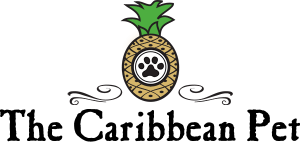- Language: French (English and Creole widely spoken)
- Currency: Euro (U.S. currency widely accepted)
- Temperature: Average 79°F year-round
- Square Miles: About 420 Approx.
- Population: 381,500
ABOUT. Martinique, a rugged Caribbean island that’s part of the Lesser Antilles and an overseas region of France, reflects a distinctive blend of French and West Indian cultures.This French Caribbean island is strongly influenced by France through its tradition and culture, with a rich history of crafts and literature, food, architecture, music + dance, and overall lifestyle. Martinique was originally inhabited by Arawaks from South America, and the majority of those early inhabitants were killed by an eruption of Mount Pelee in 295 AD.
Located in the heart of the Caribbean archipelago, Martinique is one of the Windward islands in the Lesser Antilles group.It lies between Dominica and St. Lucia about halfway down the Lesser Antilles island chain. The Atlantic Ocean is on the east, the Caribbean Sea on the west. Its eastern coastline borders the Atlantic Ocean while its western coast is flanked by the Caribbean Sea. The island is 4 350 miles away from France, 1 950 miles from New York and 275 miles from the closest South American coastline. The closest neighboring islands are to the north: Dominica, 16 miles away, Guadeloupe, 75 miles away, and to the south: Saint Lucia, 23 miles away. Martinique is equidistant from the coasts of Venezuela and Haiti/Dominican Republic (497 miles). Martinique’s eastern coastline borders the Atlantic Ocean while its western coast is flanked by the Caribbean Sea. The island is 4,350 miles away from France, 1,950 miles from New York, and 275 miles from the closest South American coastline.
At its greatest points, Martinique measures 50 miles long and 24 miles wide, delivering 425 square miles of rugged mountainous landscape, dense forests, rivers, waterfalls, rolling hills, and – most importantly – many picturesque bays and coves. With an average temperature of 79°, Martinique is referred to as the island of the “never-ending summer”. Trade winds from the east and northeast provide a steady breeze that constantly refreshes the air. Due to these tropical climate conditions in Martinique, the island is lush with vegetation: lavish tropical forests, groves, savannas, countless species of trees, fruits, plants, flowers, and mangrove forests.
Wildlife consists mainly of birds, fish and shellfish, as well as small lizards called “mabouyas” and “anolis”, iguanas and trigonocephalus snakes that are only found in Martinique. The “manicou”, a type of opossum, is one of the rare mammals to be found in the Antilles. The mongoose, was introduced by humans to control the snake population.
Its multi-ethnic population stems from the cultural mixing of the island’s successive inhabitants: Amerindians, Europeans, Africans, Indians, Levantines and Asians. Approximately one quarter of the population resides in the capital, Fort de France. The official language is French, even though everyone speaks Creole, a language that is a blend of Old French, English, and African languages, and Amerindian terms.
There are mountains, rainforest, exotic flowers, and black and white beaches. Martinique is largely agricultural; the first settlers established sugar plantations, and sugar cane continues to be an important crop. Rum is widely produced and exported; bananas and pineapples are grown here as well.
As a long-time French colony, Martinique was declared an official French overseas department in 1946, and the island’s beauty, charm and historical sites continue to attract visitors from around the world. Fort-de-France, fronted by lush, green mountains, surrounds a yacht-filled harbor, and is one of the most strikingly beautiful ports in the Caribbean.

